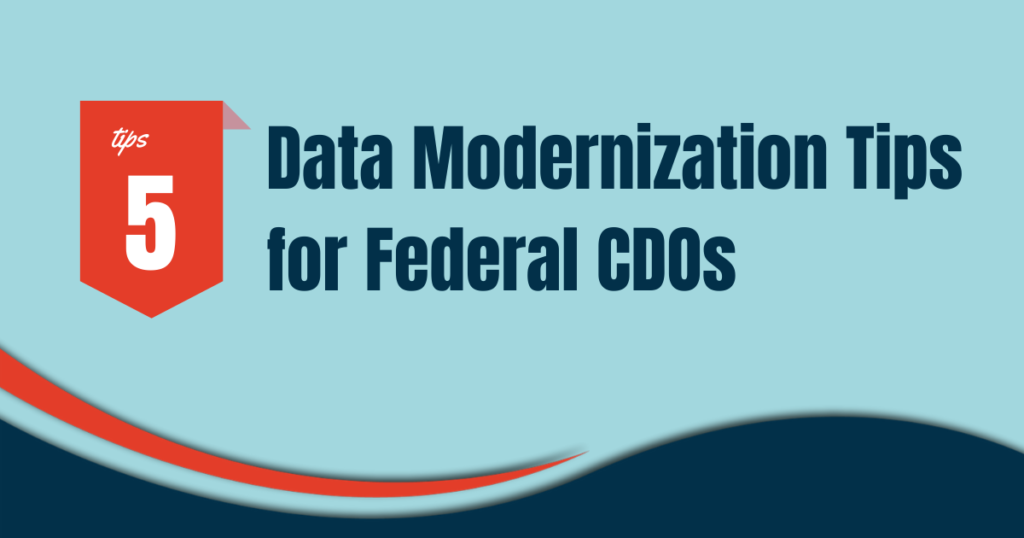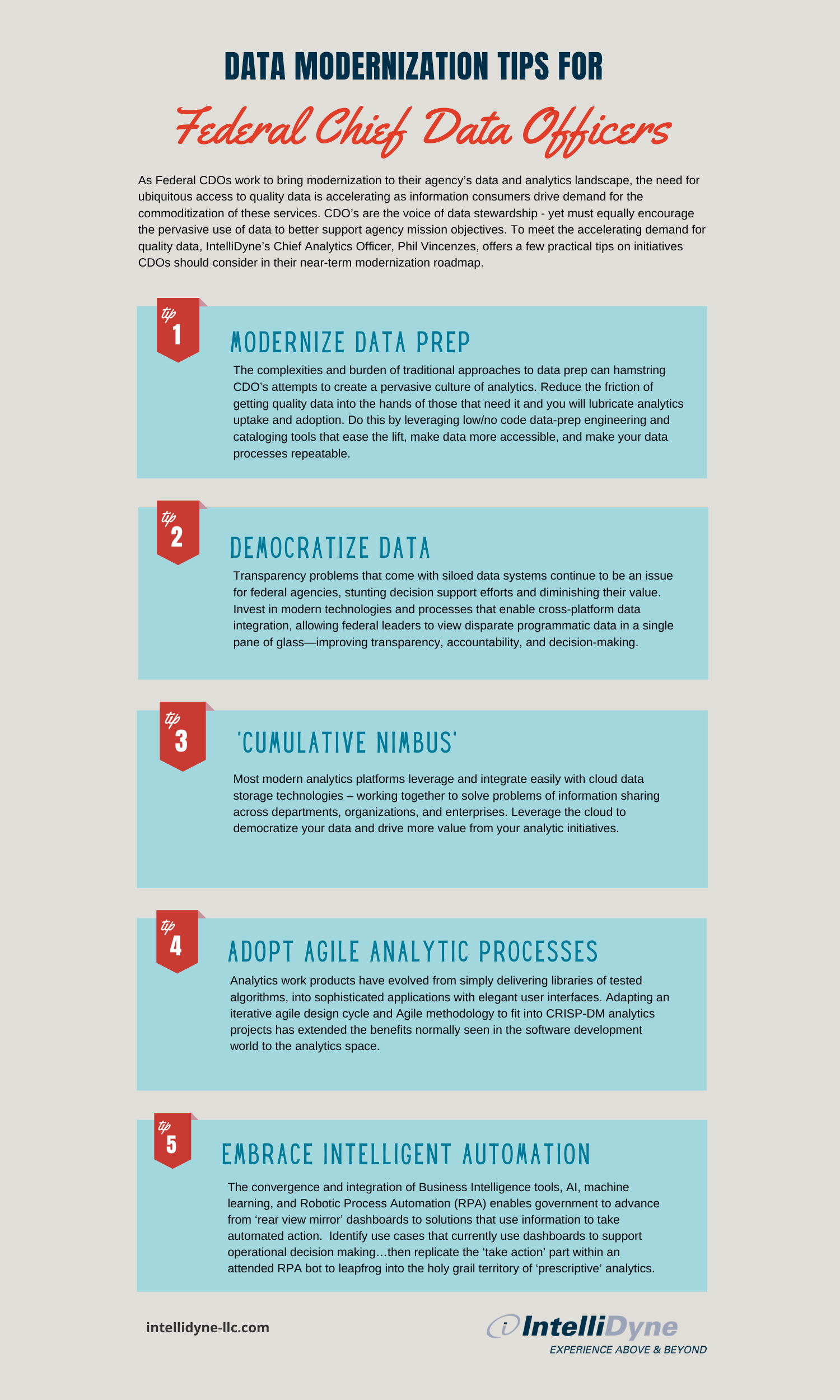As Federal Chief Data Officers (CDOs) work to bring modernization to their agency’s data and analytics landscape, the need for ubiquitous access to quality data is accelerating as information consumers drive demand for the commoditization of these services. CDO’s are the voice of data stewardship—yet must equally encourage the pervasive use of data to better support agency mission objectives. To meet the accelerating demand for quality data, IntelliDyne’s Chief Analytics Officer, Phil Vincenzes, offers a few practical tips on initiatives CDOs should consider in their near-term modernization roadmap.
- Modernize Data Prep: The complexities and burden of traditional approaches to data prep can hamstring CDO’s attempts to create a pervasive culture of analytics. Reduce the friction of getting quality data into the hands of those that need it and you will lubricate analytics uptake and adoption. Do this by leveraging low/no code data-prep engineering and cataloging tools that ease the lift, make data more accessible, and make your data processes repeatable.
- Democratize Data: Transparency problems that come with siloed data systems continue to be an issue for federal agencies, stunting decision support efforts and diminishing their value. Invest in modern technologies and processes that enable cross-platform data integration, allowing federal leaders to view disparate programmatic data in a single pane of glass— improving transparency, accountability, and decision-making.
- ‘Cumulative Nimbus’: Most modern analytics platforms leverage and integrate easily with cloud data storage technologies – working together to solve problems of information sharing across departments, organizations, and enterprises. Leverage the cloud to democratize your data and drive more value from your analytic initiatives.
- Adopt Agile Analytic Processes: Analytics work products have evolved from simply delivering libraries of tested algorithms, into sophisticated applications with elegant user interfaces. Adapting an iterative agile design cycle and Agile methodology to fit into CRISP-DM analytics projects has extended the benefits normally seen in the software development world to the analytics space.
- Embrace Intelligent Automation: The convergence and integration of Business Intelligence tools, AI, machine learning, and Robotic Process Automation (RPA) enables government to advance from ‘rear view mirror’ dashboards to solutions that use information to take automated action. Identify use cases that currently use dashboards to support operational decision making…then replicate the ‘take action’ part within an attended RPA bot to leapfrog into the holy grail territory of ‘prescriptive’ analytics.
Click image to view full-size.
Related Posts:
What is Augmented Intelligence and how can RPA advance DoD IT Modernization
IntelliDyne CAO, Phil Vincenzes, Discusses Solutions for GovIT’s Data Challenges
Onsite to Offsite: How IntelliDyne Prepared One Client for Remote Work
Better Federal Healthcare Solutions Through Modernized IT
Infographic: Processes You Can Automate with RPA in Your Agency
RPA Technologies Pave the Way to AI for Federal Agencies
Preparing for Federal Agencies’ Embrace of Automation Technology


